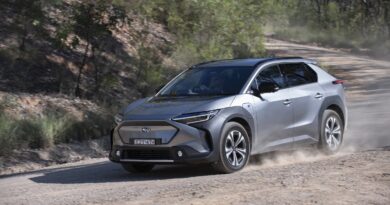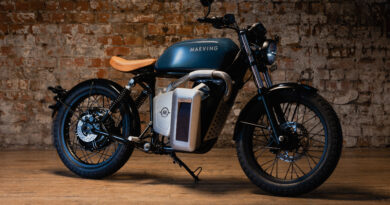2022 Cupra Born e-Boost review
Cupra’s new Born is the first EV from a young Spanish brand aiming to enter Australia in the middle of 2022. But this isn’t the only reason to be interested. This hatchback may also become the first car sold here that’s built on Volkswagen’s purpose-designed EV platform, MEB.
How come? Launched only in 2018, Cupra is a performance-oriented upmarket spin-off from Barcelona-based car maker Seat. Volkswagen bought 100 percent of Seat, which had been founded in 1950, back in 1986.
Today Seat produces almost 500,000 vehicles a year. They’re all closely related to other Volkswagen Group cars. The Leon hatchback, Seat’s best seller, is essentially a restyled Golf, while the Ateca small crossover SUV is basically a Skoda Karoq with some different panels.
There are Cupra versions of the Leon and Ateca, and both are headed for Australia. So, too, will the first model with a design exclusive to the brand, a sporty crossover SUV called Formentor. And Cupra says it could bring the Born to Australia from 2023.
The second Cupra-exclusive design, due in 2024, is an EV. The shape of this MEB-based sporty crossover SUV was previewed by the 2019 Tavascan show car. The name will be use for the production version. Another EV, based on the Urban Rebel show car, is scheduled to follow in 2025.
READ MORE: PHEVs to launch Cupra in Australia in mid-2022, EVs to follow
READ MORE: Cupra previews Aussie-bound urban electric SUV with racing concept
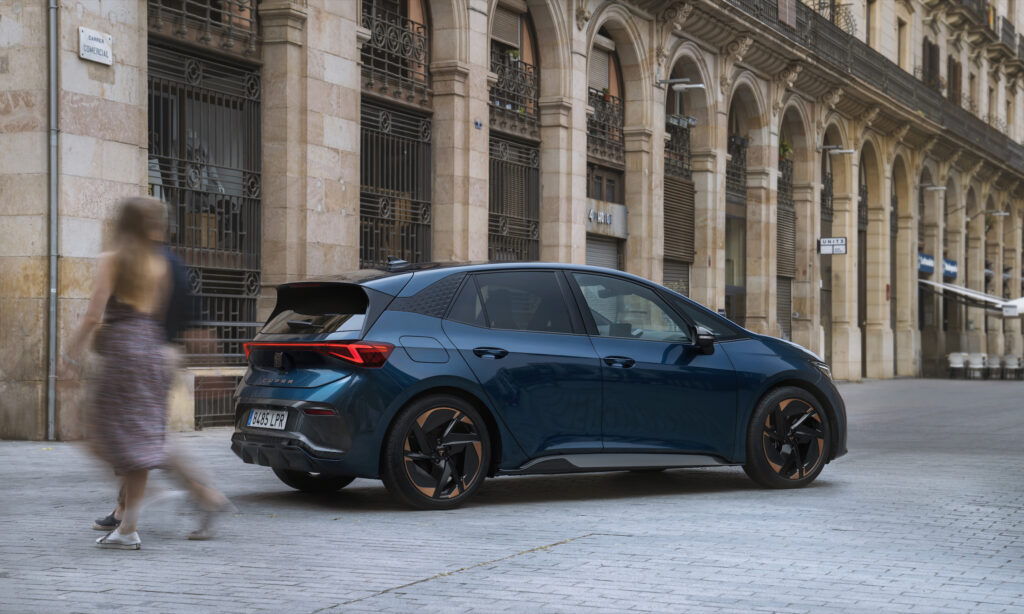
In the meantime, the Born will be the only EV in the Cupra catalogue. It’s manufactured in the same EV-only Zwickau factory that produces the Volkswagen ID.3 and went on sale in some European markets late in 2021. For now there’s a single version, with the same 58kWh battery pack and 150kW electric motor, just like the VW ID.3 in Pro Performance form.
But Cupra has plans to extend the Born line-up through 2022. It will add a model with a smaller battery pack and less powerful motor, but also two variants with more than the 150kW maximum available in the ID.3.
The Oz Born family…
Cupra plans to position itself in Australia as a performance brand and will ignore the more affordable models at the value end of its line-ups elsewhere in the world.
This is the case with the Leon, Ateca and Formentor variants already confirmed for launch in Australia. All of them are from the middle and top end of the model ranges offered in Europe. This strategy is almost certain to carry through to the Born, which will arrive here in late 2022 or early 2023.
So let’s discuss e-Boost. This is Cupra’s name for the option package that increases the maximum power output of the Born’s motor to 170kW. This is 20kW more than in the ID.3, though the maximum torque figure of both versions of the synchronous permanent magnet motor is 310Nm.
The motors are identical, according to a Cupra tech exec. The Born’s extra power is achieved entirely by changes to software. The full 170kW is available only for 30 seconds, which is plenty long enough to ensure the Born is measurably quicker.
Cupra claims the e-Boost equipped Born with 58kWh battery pack will accelerate 0-100km/h in 6.6 seconds. This is edging into hot hatch performance territory, and 0.7 seconds better than an equivalent Born without e-Boost.
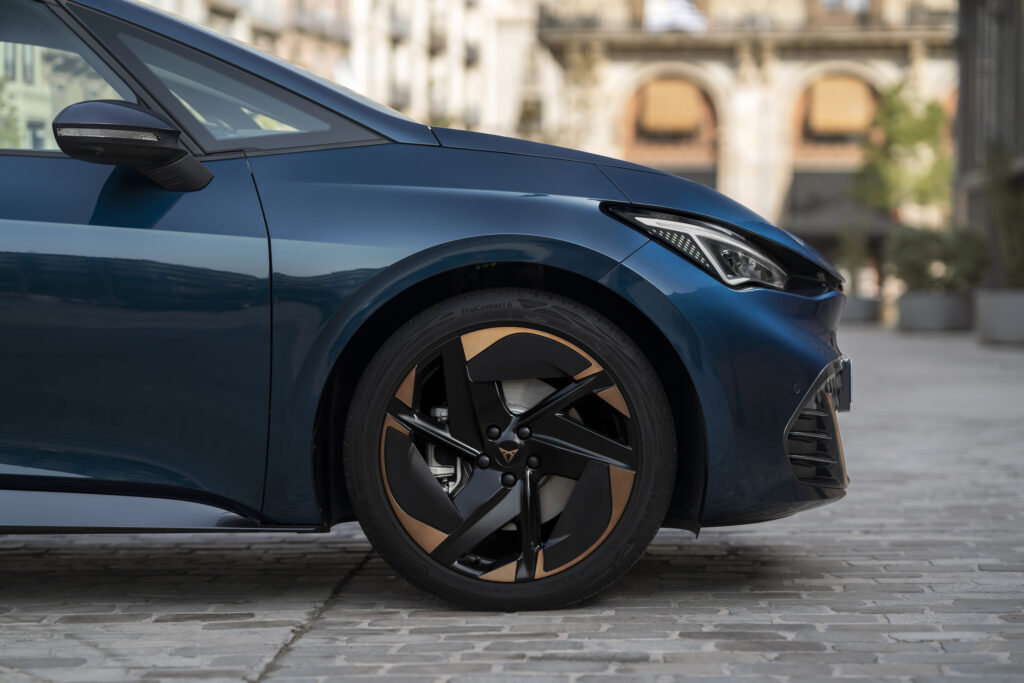
There’s a little more to the package than a few lines of new code in the motor control software. The e-Boost option pack also includes larger front brakes, standard 19-inch wheels and tyres, and a steering wheel with extra satellite buttons (more on these later).
The e-Boost package will be standard in the 77kWh battery pack Born variant to be launched next year. Though the bigger battery will deliver a WLTP-rated driving range of around 540km, the pack’s extra weight makes this version of the Born slower. Cupra claims a 0-100km/h time of 7.0 seconds.
How many Born variants will make it to Australia, and how much will they cost? Such decisions are a long way from being finalised by Cupra Australia. But EV Central can take some educated guesses…
You can count on the 58kWh Born, possibly with e-Boost as standard rather than an option, as in Europe. The 77kWh is very likely, but don’t expect to see the base-grade Born with 45kWh battery pack and 110kW motor.
In Europe the 58kWh Born without e-Boost is the same money as the ID.3 Pro Performance. This indicates a price in Australia of around $60,000, possibly less. Cupra Australia brand director Ben Wilks has previously told EV Central the brand will operate in pricing territory from the low $40,000s to the high $60,000s.
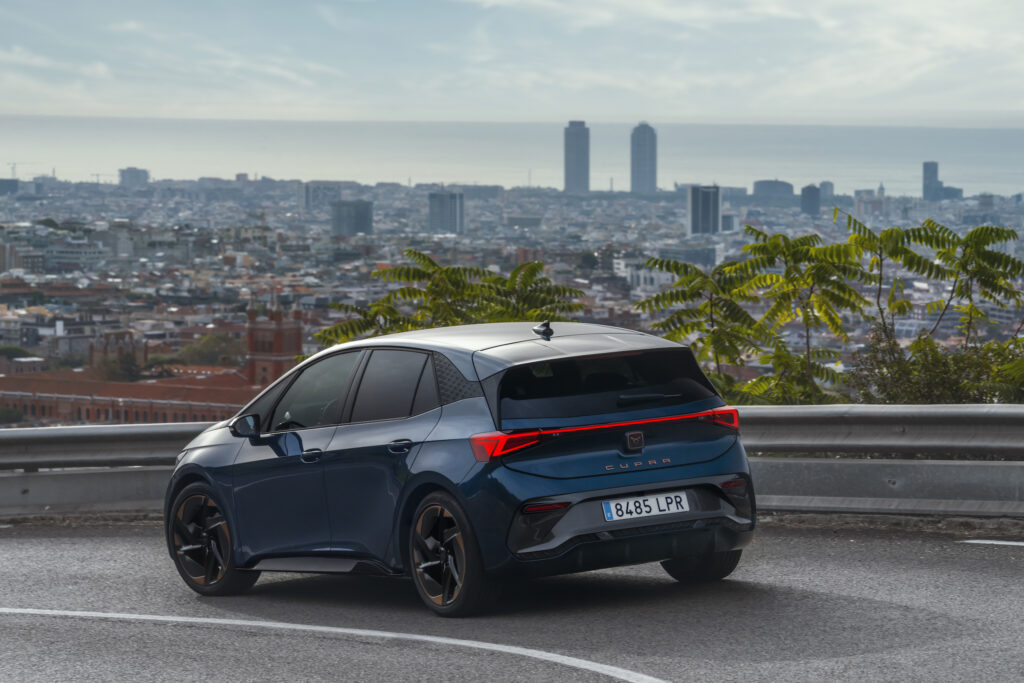
Driving the e-Boost Cupra Born
At Cupra’s recent event to present the Born to specialist international media, we were allocated a 58kWh Born with e-Boost. Not by accident, we suspect…
The drive program used roads in and around the brand’s hometown, Barcelona. It provided plenty of variety; late morning rush-hour traffic in the city centre, motorway and urban arterial running, plus some twisty mountain roads on the fringes of the Catalan capital.
The effect of e-Boost is noticeable. The extra power is always available in the special Cupra driving mode that’s only found in e-Boost-equipped Borns.
There are two ways to access it via the steering satellite buttons that are part of the e-Boost package. Pressing the left-hand button moves sequentially through the driving mode menu; Range, Comfort, Performance, Individual (where variable parameters from steering weight to motor responsiveness can be individually selected by the driver) and Cupra. Alternatively, simply press the right-hand button for instant access to Cupra mode. Finally, the full 170kW is also delivered in any mode if the accelerator pedal is fully flattened.
In Cupra mode the e-Boosted Born feels significantly quicker than a Volkswagen ID.3 Pro Performance. This sensation comes partly from a more responsive calibration of the accelerator pedal, but there’s also extra urge. And it’s delivered in the lovely shift-free surge typical of powerful EVs with a single fixed gear ratio.

Just as in VW’s MEB-based cars we’ve driven, the drivetrain of the Cupra is impressively quiet and vibration free.
Striving to position the Born as a sportier and more spirited drive than the ID.3, Cupra has made changes to the EV’s chassis. The Born’s suspension is lowered slightly (15mm at the front, 10mm at the rear) and it gets different dampers.
Surprisingly, the Born’s ride is better than the ID.3. Where the VW feels a little stiff-legged, the Cupra absorbs bumps with less drama. Even so, the suspension exerts a very nicely judged level of control.
The steering, while accurate and not-too-heavy, is pretty much feel-free, and the e-Boosted Cupra’s larger brakes are not as precisely progressive as the VW. It’s harder to make really smooth stops at low speed in the Born.
Even so, the extra power and superior suspension of the Born make it a more fluently enjoyable car to drive fast. Up to a point…
Our test Born wore 215/45 20-inch tyres, and they lack the grip to take full advantage of the car’s handling talent. On the winding hill road included in the drive program cornering ambitions were frequently curbed by ABS and stability control interventions.
Wider 235/40 20-inch tyres are optional in Europe. It’s to be hoped these are made standard for the Australian market Born. The car needs more grip to be authentically sporty to drive.
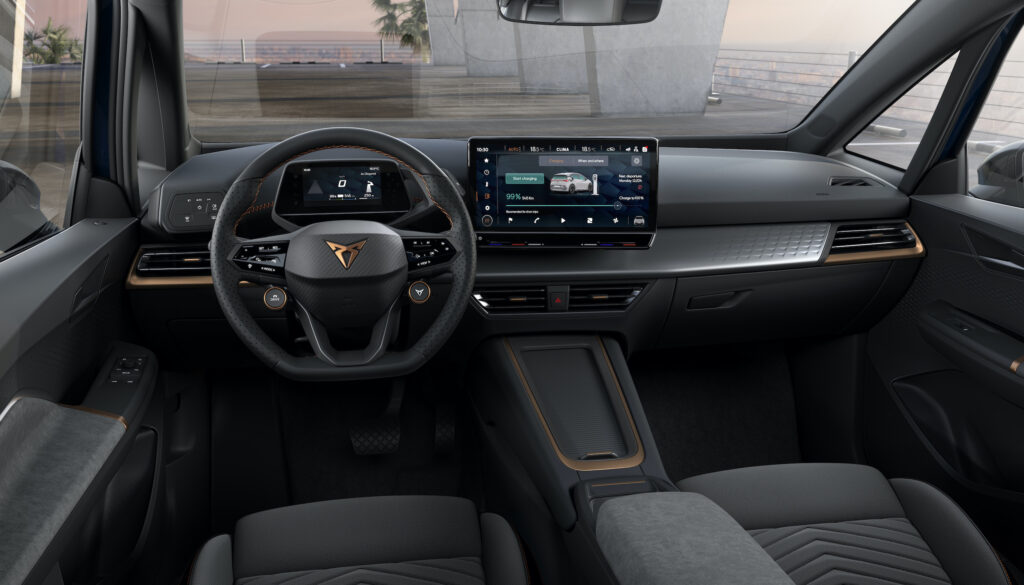
Born design and interior
Cupra’s exterior designers weren’t able to alter the pressed metal parts of the ID.3’s exterior, a costly thing to do. But they could give the Born different plastic parts and wheels. The new-look bumpers front and rear combine with redesigned lamps and the car’s lower stance to add some visual aggression.
The changes are more extensive inside. The Born gets front seats with more pronounced padding and a specific steering wheel design. Cupra’s signature copper colour is used for decorative parts. Combined with the dark-hued interior trimmings, the effect is classy and sporty.
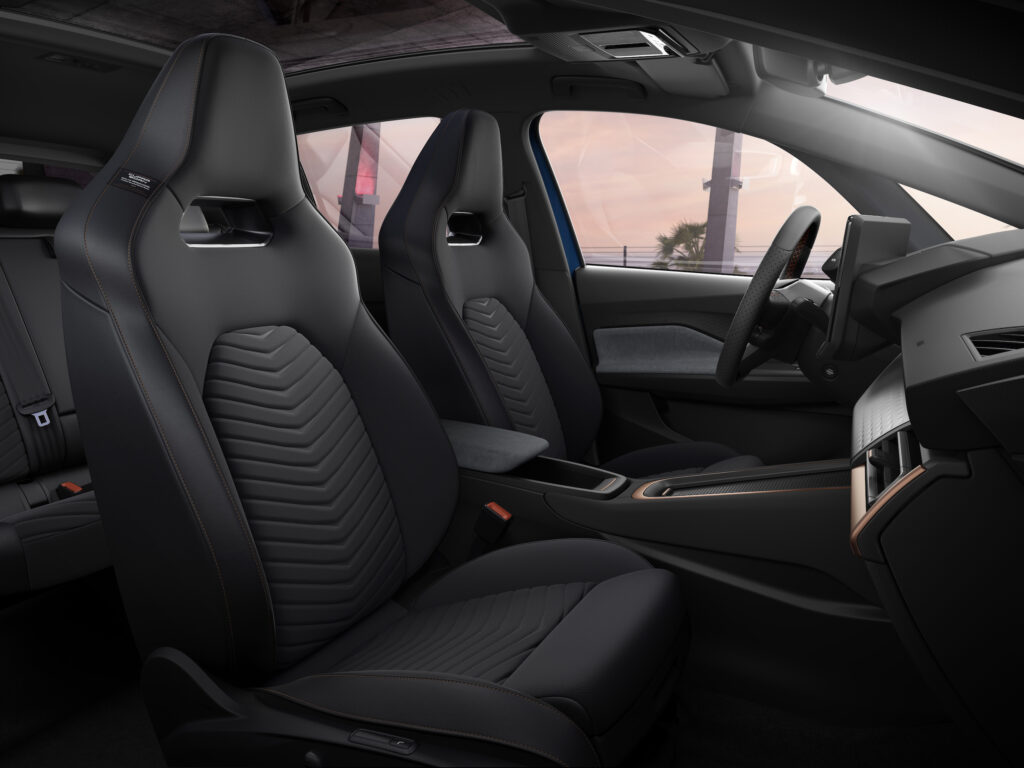
The car’s seat coverings are made in part from Seaqual, a textile made in Spain from recycled plastic retrieved from the sea. The optional Dinamica upholstery is also made from recycled material.
There’s plenty of hatchback flexibility and practicality to go with the eco-consciousness. The rear seat is spacious and the cargo compartment can accommodate almost 400 litres of luggage.
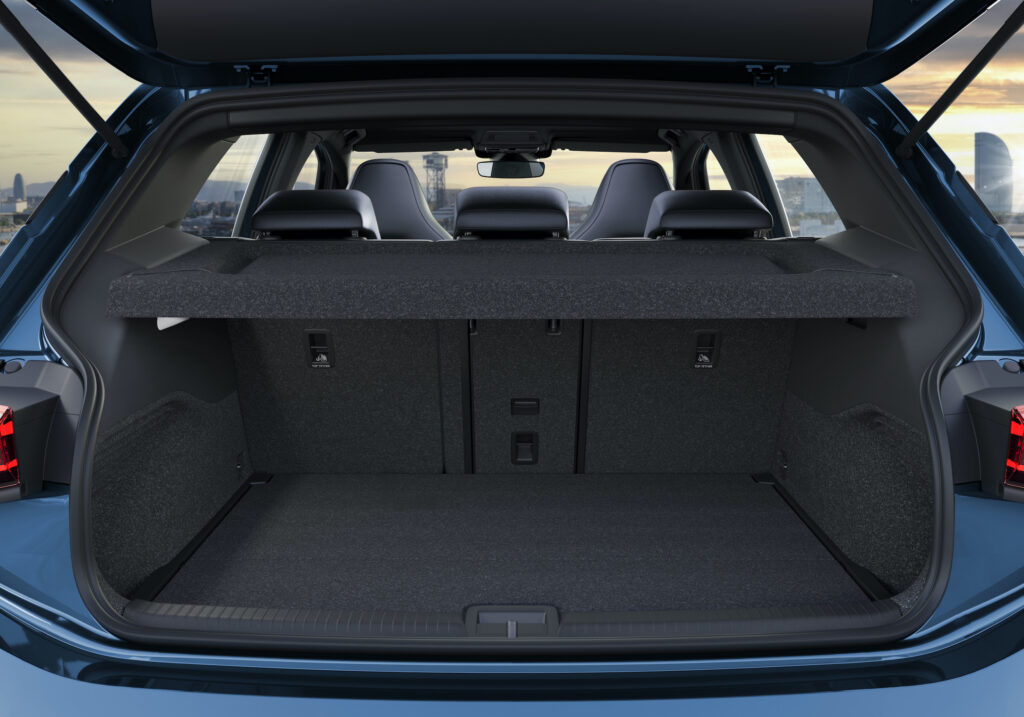
The front seats are comfortable and the driving position is fine, though the slanting A-pillars do obscure vision of what’s ahead and to the side of the car.
The Born’s central screen is large and sharp, but the menu structure is over-complex to use. Just like in the ID.3, though the graphics are Cupra’s work. Another annoyance is that the design of the Born’s steering wheel makes unintentionally bumping its control pads way too easy.
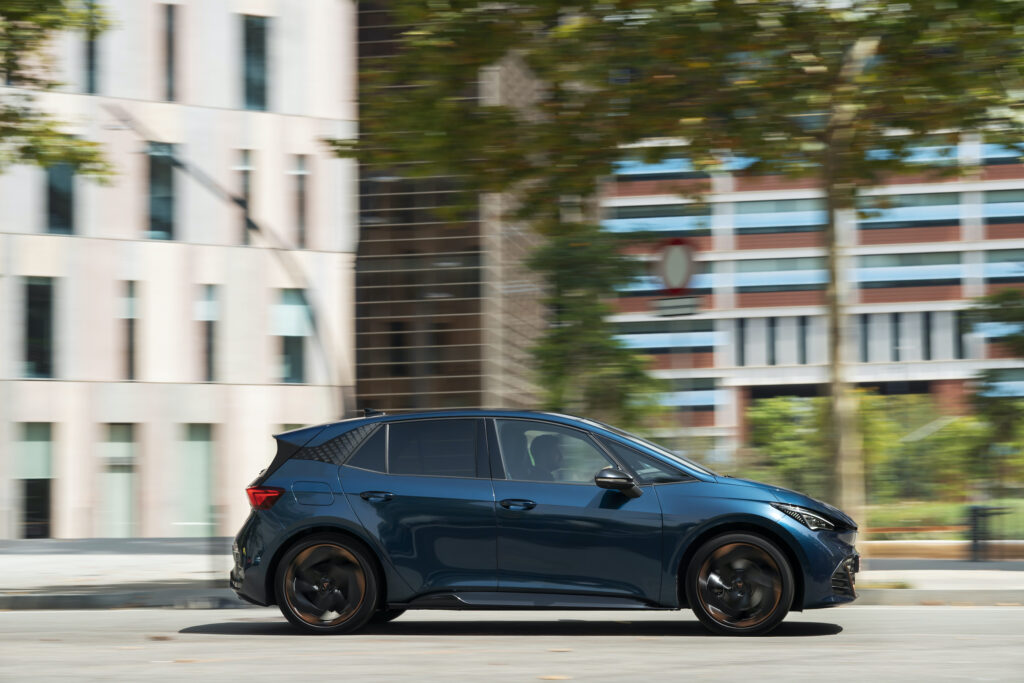
Charging and efficiency
When it comes to charging, the Cupra is the same as its close VW relatives.
This means it has an 11kW on-board AC charger. The 58kWh battery can take up to 120kW from a DC fast charger, while the 77kWh pack can accept up to 170kW. These are all competitive specs for a small EV.
Using an appropriately rated home wallbox or destination charger, it will take a little more than six hours to charge the 58kWh Born’s battery from empty to full. The 77kWh will take around two hours longer.
Connected to a powerful DC fast charger both versions will be need a little more than 30 minutes to take their battery packs from 10 percent to 80 percent charged.
The Cupra has a CCS Combo plug port that handles both AC and DC charging.
For both range and energy efficiency, the Born is better than some obvious small EV rivals. The 58kWh battery pack has similar capacity to the Nissan Leaf e+, but can drive further because it uses fewer kWh/100km.
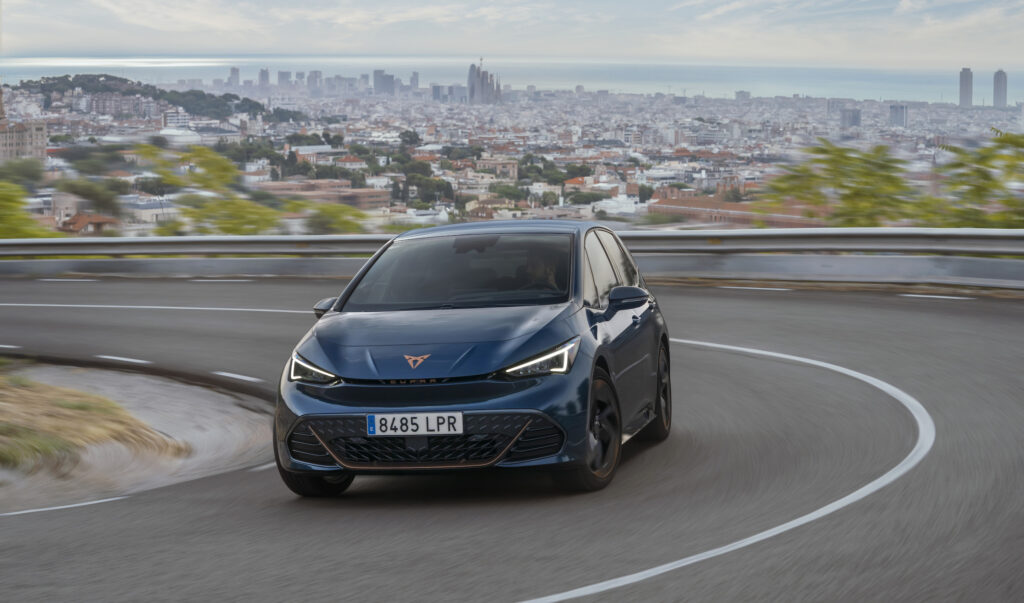
Verdict
In some key ways the Cupra Born is a better small EV hatchback than the VW ID.3. The versions headed for Australia are better fun to drive, thanks to the extra power provided by e-Boost and Cupra’s subtle changes to the chassis.
The Born also proves a vital point regarding Volkswagen Group’s huge investment in MEB. Its practicality, roominess, refinement and efficiency turn the theoretical benefits of a purpose-designed EV platform into concrete reality.
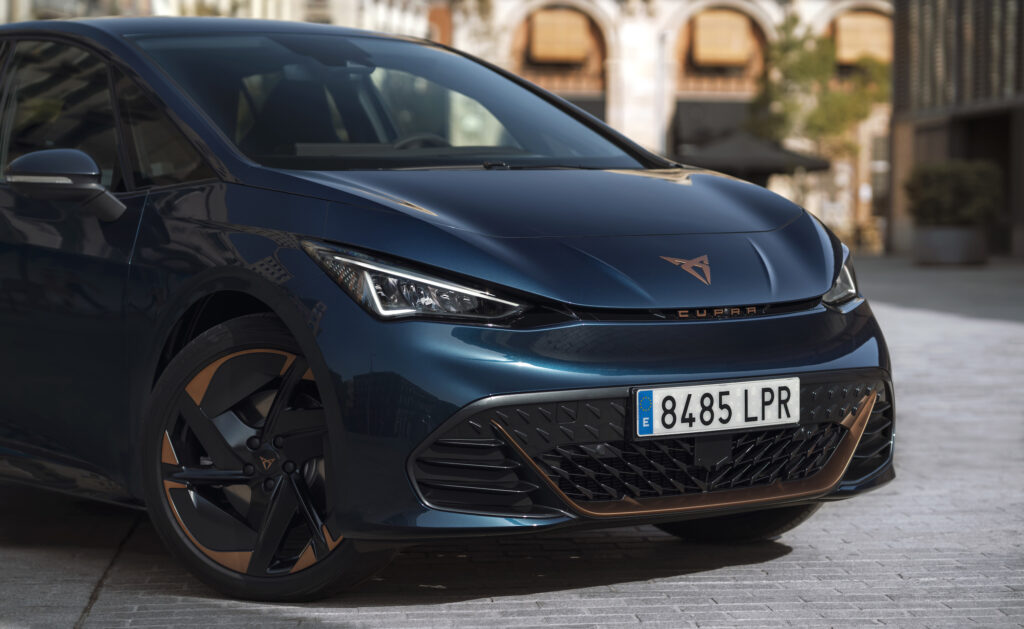
2022 Cupra Born e-Boost specifications
Price: About $60,000 in Europe; Cupra has hinted at closer to $50K for Australia
Basics: EV, 5 seats, 5 doors, small hatchback, RWD
Range: 420km WLTP estimated
Battery capacity: 58kWh
Battery warranty: 8 years/160,000km (guarantee of 70 percent of original battery capacity)
Energy consumption: 15.5kWh/100km WLTP estimated
Motors: 1 rear, 170kW/310Nm synchronous permanent magnet
AC charging: 11kW, Type 2 plug
DC charging: 120kW, CCS Combo plug
0-100km/h: 6.6 seconds (claimed)

